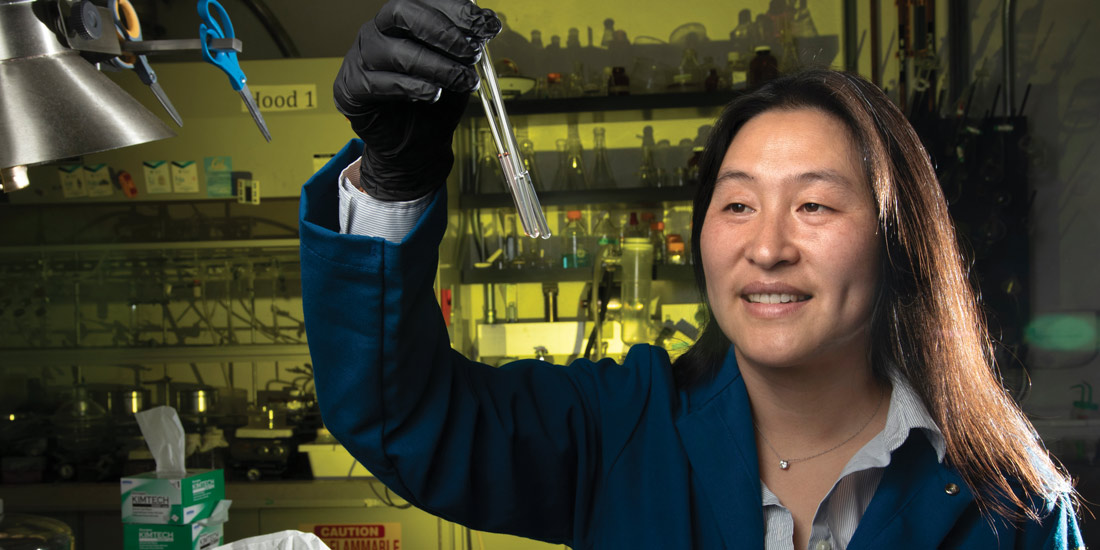
Cleaning up contamination
Like toddlers and orchids, proteins can be fussy. Remove proteins from the cell, and they will likely break down. But researchers led by Ting Xu, a professor with appointments in materials science and engineering and in chemistry, have figured out a way to keep certain proteins active outside of the cell, and have used this technology to create mats that soak up and trap chemical pollution. Previous efforts to stabilize proteins outside of the cell have yielded limited success, so the team developed a synthetic polymer — called RHP — that provides all the things a protein would need to keep its structure and function outside of its native environment. The RHPs were then mixed with a protein called organophosphorus hydrolase to make fiber mats that successfully soaked up a toxic insecticide. Xu said this approach should be applicable to other enzymes and materials, opening the door to larger mats that could be used in places such war zones or other contaminated sites.

